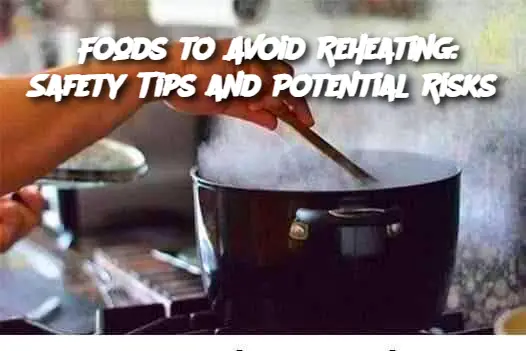Potatoes: Potatoes that have been left at room temperature or not cooled quickly enough can grow Clostridium botulinum, a bacteria that causes botulism. If reheating potatoes, make sure they were stored in the fridge promptly and reheated thoroughly to kill any potential bacteria.
Leafy Greens: Vegetables like spinach, kale, and other leafy greens contain high levels of nitrates. When reheated, especially at high temperatures, nitrates can convert into nitrites, which can be harmful to health in large quantities. To avoid this risk, it’s better to eat these vegetables fresh and avoid reheating them.
Step 2: Practice Safe Reheating To ensure that your food is safe to reheat, follow these guidelines:
Store leftovers immediately: After cooking, allow food to cool to room temperature for no more than two hours before storing it in the fridge. Make sure your leftovers are stored in airtight containers to prevent contamination.
Reheat thoroughly: When reheating, ensure food is heated evenly and reaches a temperature of at least 165°F (74°C) to kill any potential bacteria.
Avoid reheating multiple times: Try not to reheat food more than once. Each time you reheat food, the risk of bacterial growth increases.
Step 3: Be Mindful of Leftover Storage To minimize the risk of foodborne illnesses, store your leftovers properly:
Use airtight containers: Make sure that leftovers are stored in clean, airtight containers to prevent the growth of bacteria or mold.
Cool food properly: Before refrigerating leftovers, ensure they are cooled rapidly. If you have a large batch, divide the food into smaller portions to cool more quickly.
Know when to discard: Leftovers should be eaten within 3-4 days of being cooked. If you’re unsure about the safety of your leftovers, it’s better to discard them than risk foodborne illness.
Tips for Serving and Storing:
Serve leftovers within the first few days: Always aim to eat refrigerated leftovers within 3-4 days. Any longer than that, and you risk an increased bacterial growth, which can lead to illness.
Use microwave-safe containers: If using a microwave to reheat, ensure the containers you use are microwave-safe. Avoid plastic containers that may leach harmful chemicals when heated.
Reheat in small batches: When reheating, try to heat only the portion you’ll be eating to avoid reheating multiple times.
Variants:
Microwave vs. Stovetop: While the microwave is convenient, some foods like meat and potatoes can lose texture and flavor when reheated in the microwave. For better results, try reheating on the stovetop with a bit of oil or water to retain moisture.
Oven Reheating: The oven is often a better choice for larger items like casseroles or baked goods, as it provides more even heat distribution.
FAQ:
Q: Can I reheat pasta? A: Yes, pasta can be safely reheated, but it should be done carefully. Reheat pasta with sauce on the stovetop, adding a bit of water to prevent it from drying out. Avoid reheating pasta too many times, as it may become mushy.
Q: Is it safe to reheat food in the microwave? A: Yes, reheating food in the microwave is safe as long as the food is heated to the proper temperature of 165°F (74°C). Stir the food occasionally for even heating and avoid reheating certain foods, like leafy greens, at high temperatures.
Q: Why should I avoid reheating potatoes? A: Potatoes that are not stored properly can contain Clostridium botulinum bacteria, which can cause food poisoning. Always refrigerate potatoes quickly after cooking and reheat them to a safe temperature.
Q: Can I reheat chicken? A: Yes, chicken can be reheated safely. However, make sure it’s thoroughly heated to 165°F (74°C) to ensure all bacteria are killed. Avoid reheating chicken multiple times, as it can dry out and lose flavor.
Q: How can I safely reheat seafood? A: Reheat seafood quickly, at a low temperature, to avoid overcooking and ruining the texture. Seafood should only be reheated once and consumed soon after cooking.
In conclusion, while reheating leftovers is a convenient and time-saving method, it’s important to be aware of which foods can pose risks if not reheated correctly. By following these safety tips and storing food properly, you can avoid potential dangers and continue to enjoy your meals without compromising your health. Always remember that proper food handling and reheating practices can help you safely enjoy your leftovers without worry.
ADVERTISEMENT

